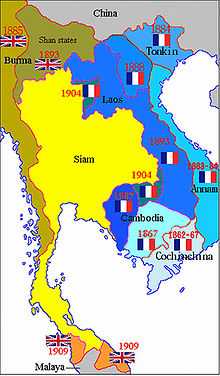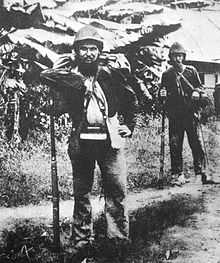Thái Nguyên uprising
The rising in Thái Nguyên (Vietnamese: Khởi nghĩa Thái Nguyên) in 1917 in was the "largest and most destructive" anti-colonial rebellion in French Indochina between the Pacification of Tonkin in the 1880s and the Nghe-Tinh Revolt of 1930–31.[1]
History
In August 1917, Vietnamese prison guards mutinied at the Thai Nguyen Penitentiary, the largest one in the region. With the aid of the freed inmates – common criminals as well as political prisoners – and weapons captured from the provincial arsenal, the rebels were able to take over control of local government offices. They then established a fortified perimeter, executed French officials and local collaborators, and called for a general uprising. Although they were only able to hold the city for five days, French forces were not able to pacify the surrounding countryside until six months later, leaving many casualties on both sides.[1]
Notes
| ||||||||||||||||||||||




